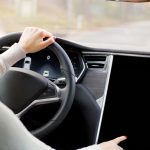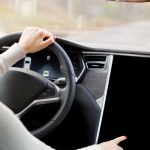Emerging technologies are driving rapid changes in operational efficiency, with drone swarms taking a central role in reshaping sectors like agriculture, demining, and logistics. The use of multiple autonomous drones, each equipped to make real-time decisions without relying on a central command, presents new opportunities for data-gathering, cost reduction, and process automation. Industry experts argue that the time for broader adoption is approaching, yet several significant hurdles still require attention before drone swarms can reach their full commercial potential.
Recent coverage confirms that drone swarm applications have gradually shifted from controlled laboratory situations to limited field pilots in targeted sectors. Earlier discussions largely focused on the theoretical advantages, such as scalability and resilience, while practical implementations remained experimental. While regulatory and technical barriers once kept wide-scale usage at bay, recent technology advances and decreasing hardware costs now create a pathway for integration. Compared to past predictions, tangible progress in onboard processing power, swarm coordination, and sensor affordability has noticeably accelerated, especially in agriculture and warehousing.
How Do Drone Swarms Operate at Scale?
Autonomous drone swarms coordinate their actions through decentralized systems modeled on natural swarm behaviors found in insects or birds. Each unit is programmed with a set of rules and is capable of analyzing local environmental data as well as the behavior of neighboring drones. This lack of hierarchical structure allows individual drones to respond dynamically to new information. Synchronization and duplication of tasks ensure consistent results, a model that supports scalability across various operational environments.
Can Drone Swarms Reduce Costs and Enhance Efficiency?
Analysis shows that these swarm systems can decrease operating costs by as much as 30%, with most savings attributed to reduced labor expenditures, which traditionally account for a major share of drone deployment costs. In agriculture, coordinated swarms automate processes such as multispectral monitoring, targeted fertilizer dispensing, and early detection of plant health issues, promoting resource efficiency and minimizing human intervention. Moreover, companies like ZenaDrone have introduced solutions for synchronized inventory tracking in controlled indoor logistics spaces, optimizing scan rates and reducing reliance on manual labor.
What Obstacles Remain for Widespread Adoption of Drone Swarms?
Challenges preventing ubiquitous deployment include sufficient onboard processing power, accurate real-time positioning, and streamlined communication among drones, particularly in complex tasks like humanitarian demining. Technical limitations currently restrict multi-waveband radar scanning, critical for identifying subsurface threats, and current GPS and visual odometry systems have yet to achieve the accuracy needed for precise swarm coordination. Additionally, regulatory considerations, especially concerning public safety and infrastructure compatibility, place constraints on open-environment applications. Vladimir Spinko, founder of Aery Bizkaia, notes,
“We still need advances in drone processing power to fully support real-time, onboard decision making.”
However, researchers are exploring advanced prototypes, such as the Wyss Institute’s RoboBees, and collaborative efforts across universities and private firms aim to solve the technical issues. Spinko adds,
“As component prices fall and battery efficiency rises, we expect drone swarms to play a larger role beyond niche deployments.”
Notable progress is taking place in logistics and targeted demining, where controlled conditions allow for safer real-world testing and refined operational algorithms.
The deployment of drone swarms demonstrates potential advantages in terms of cost control, adaptability, and operational speed in several industries. Examination of results from recent pilots highlights that decentralized intelligence—rather than centralized software—provides the foundation for flexible, wide-area data collection and rapid task completion. Nevertheless, most implementations today are constrained by practical limitations rather than conceptual flaws. Readers interested in pursuing this technology should focus on assessing technological readiness, regulatory compliance, and the specific logistics of their operational environments. Staged adoption, with emphasis on technically manageable and regulatory-friendly projects, could pave the way for broader commercial acceptance as supporting technologies advance. Understanding both the potential and the constraints of drone swarms will help decision-makers position themselves to adopt automation with minimal disruption, anticipating incremental progress rather than expecting immediate large-scale impact.










